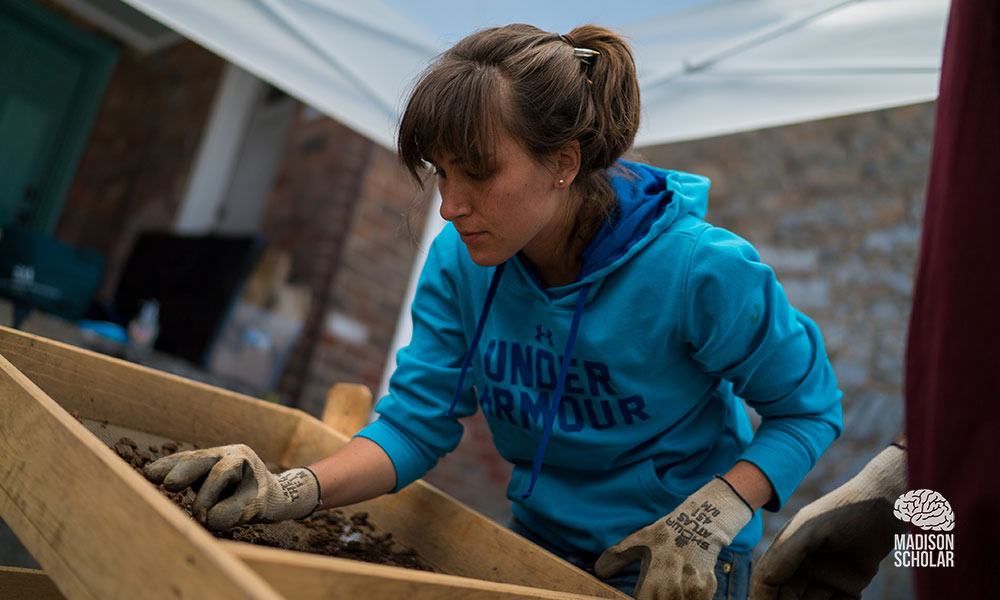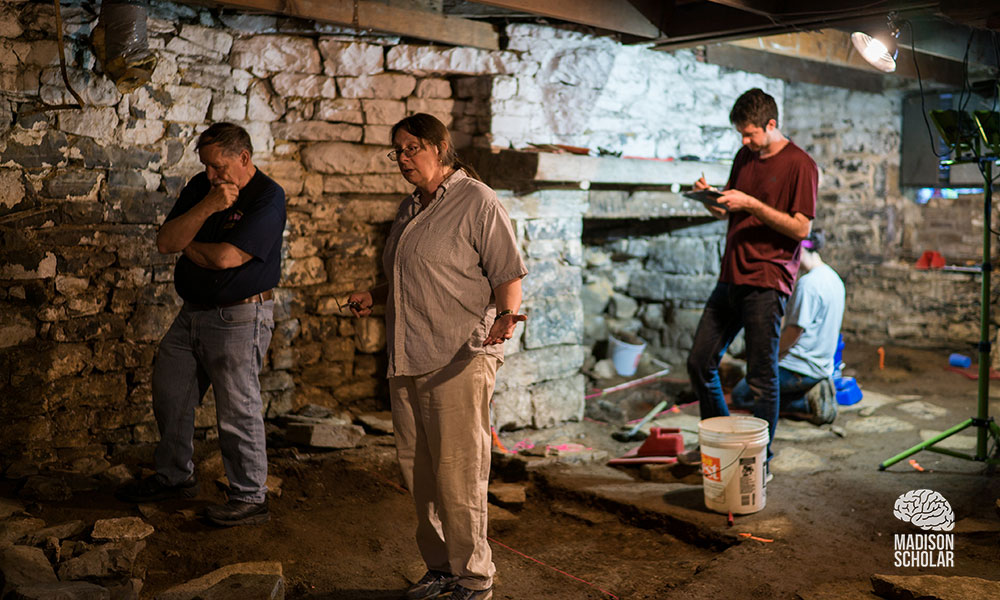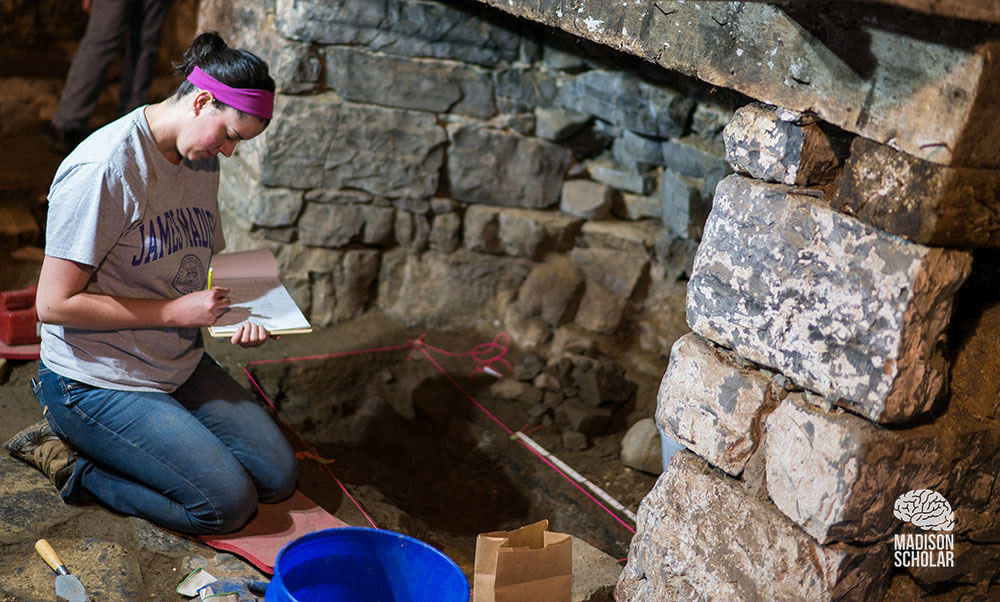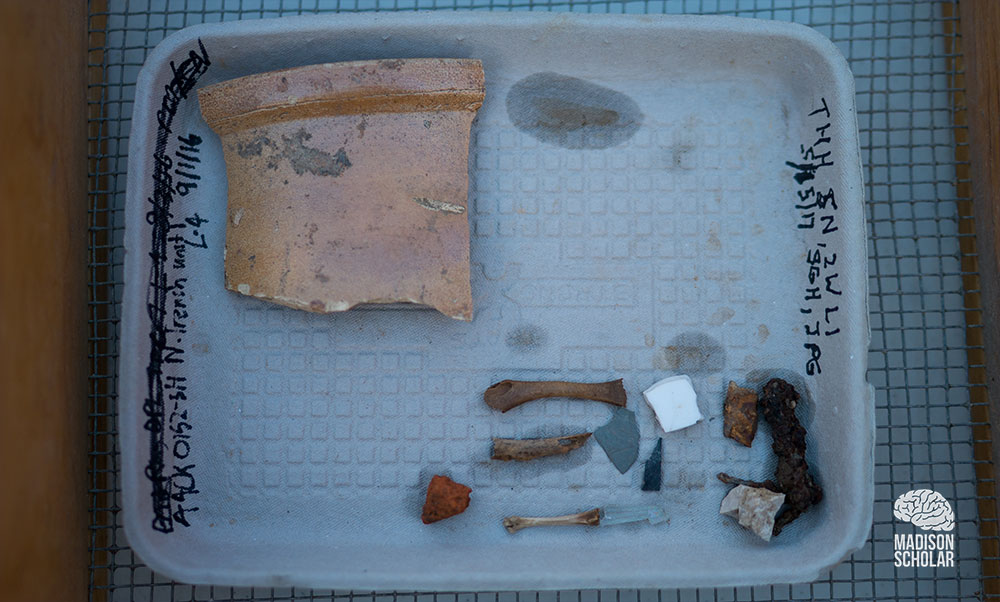Digging into history
Professor unearths secrets of Harrisonburg's beginning
Science and Technology
SUMMARY: Nash and her team--which consists of recent JMU graduates Samantha Hill and Emma Vance; rising senior John Grimme; and volunteers from the Archaeological Society of Virginia--are concentrating on the cellar of the house on Bruce Street.
About a month into an archaeological dig at Harrisonburg's most historic house, Carole Nash likes what she's seeing.
"We have literally been able to track different types of ceramic from about 1760 to about 1900 just from what we've pulled from our excavation units so far," said Nash, who received $9,620 from the City of Harrisonburg and the Margaret Grattan Weaver Foundation to get the project started.
Harrisonburg is named for the home's first occupant, Thomas Harrison, who came to the central Shenandoah Valley from New York. Harrison deeded 50 acres of land to start the city in 1780.

Nash, an associate professor of integrated science and technology who specializes in archaeology, has been looking forward to the project for quite some time. "We wanted to do archaeology at the Harrison House for many years because it's a time capsule. Not only is it this remarkable building in terms of what's standing above ground, but from an archaeological perspective it's a time capsule of the early city," she said.
Nash and her team—which consists of recent JMU graduates Samantha Hill and Emma Vance; rising senior John Grimme; and volunteers from the Archaeological Society of Virginia—are concentrating on the cellar of the house on Bruce Street, which includes a spring and an English-style hearth. Building over a spring is typical of German-style architecture in the valley at the time. "So in addition to being a time capsule, it is also marking that point in time when different cultural traditions started to come together, in material culture in particular," Nash said.

Among questions she hopes to answer is the date the home was built—local tradition identifies a 1750s-era date for the construction of the house. The excavation has not yet uncovered artifacts from that period, but as work continues, the deeper levels will tell the story—and whether Harrison owned slaves. One indication that he did, she said, is the lack of a staircase from the basement into the house. Meals prepared in the cellar had to be carried outside the house and delivered, which was common in homes where slaves prepared meals for their owners.
The dig will conclude in June. Before then, the public will be invited to view the project from 10 a.m.-2p.m. Saturday, June 3.

Nash and her team will write a report of their findings for the city and also provide a catalogue of what they find.
More information about the project can be found on the City of Harrisonburg website at https://www.harrisonburgva.gov/thomas-harrison-house.
JMU's student Newspaper, The Breeze, also has published a story about the project.
Partners on the project—in addition to The City of Harrisonburg, the Margaret Grattan Weaver Foundation and JMU—are Asbury United Methodist Church; The Harrisonburg-Rockingham Historical Society; and Frazier Associates, Architects and Planners.

